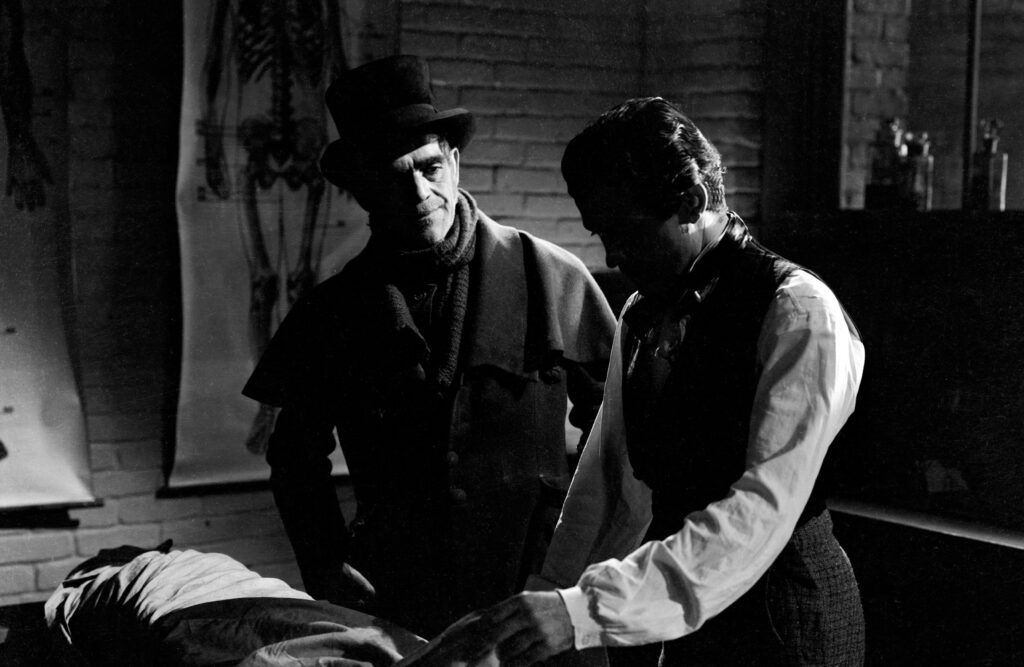
I’m not the biggest fan of Robert Wise, but I do love The Set-Up (1949) and The Body Snatcher (1945). While The Set-Up sits comfortably in the Noir cannon, The Body Snatcher (a Gothic horror film based on a work of Robert Louis Stevenson’s) does not, even though, visually, one could argue that the earlier film is a better example of Noir. Such is the case with any number of Val Lewton’s productions (who is always equal to the director in auteurist terms). Today, Lewton is best known for the films he produced and Jacques Tourneur directed which are often cited as precursors to Film Noir. Wise’s work for Lewton, though less famous, is just as vital to an understanding of the genesis of Noir in the post-war period.
Consider for a moment Robert De Grasse’s cinematography in The Body Snatcher. The frame is awash with shadows, with light barely defining space and form. Here the suggestion of the visceral works far better for the narrative involving grave robbers than the flatter, fuller lighting scheme of most horror films of this period. The Body Snatcher is best understood as a fusion, as Horror Noir.
Perhaps part of the motivation to bathe the image in shadows is born out of the more limited resources at Wise and Lewton’s disposal. RKO Radio Pictures, where Lewton primarily worked, specialized in “B-movies”, foreshadowing American International Pictures’ output and business model. This may be of the utmost importance to The Body Snatcher’s position in American film history, but with regards to the film itself it is secondary.
The Body Snatcher would be the last time that Boris Karloff and Bela Lugosi appeared in a film together. These titans of the horror genre don’t get a lot of screen time together, but I’m sure that this is what draws most viewers to this underrated installment in Lewton’s filmography.
